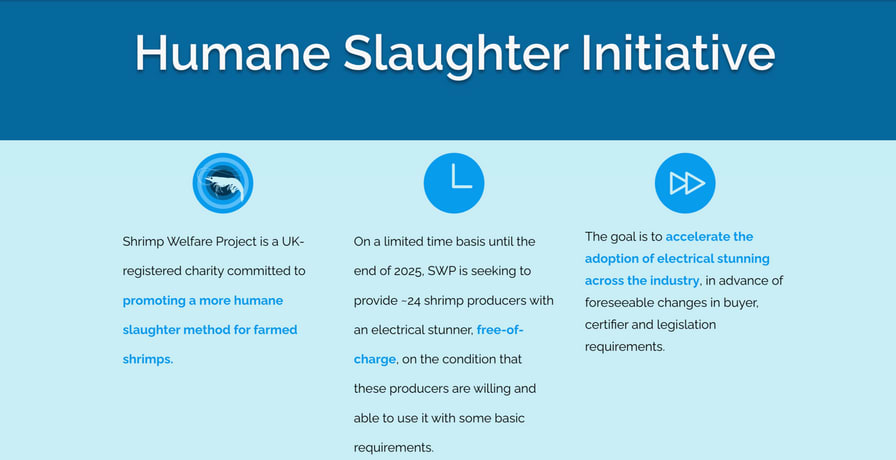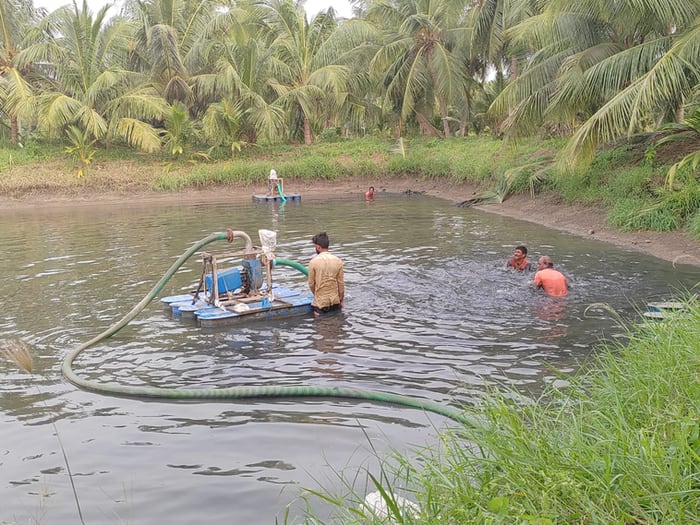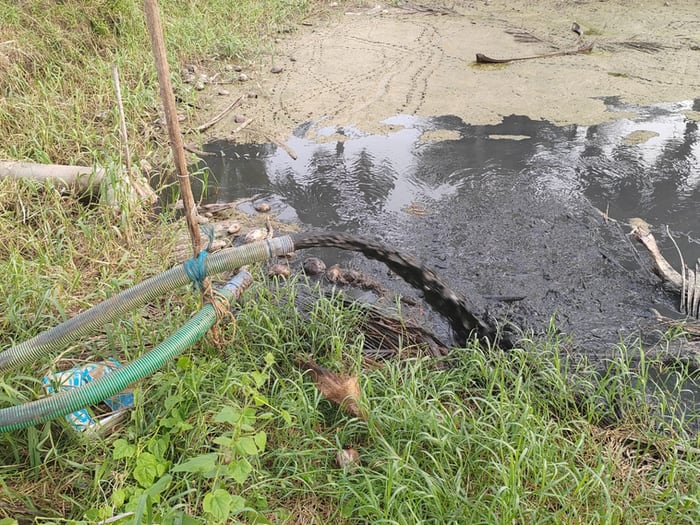This post was cross-posted by the Forum team with the permission of the author. The author may not see or respond to comments on this post.

Greetings from Shrimp Welfare Project!
Our team is excited to announce the launch of our new webpage dedicated to the Humane Slaughter Initiative! This initiative aims to revolutionise the way shrimps are stunned prior to slaughter and pave the way for the future of ethical shrimp production. Learn more about this new page below.
In a newly published article on our website highlighting the urgency of responsible pond management, findings revealed alarmingly toxic hydrogen sulphide levels in shrimp ponds in India's Serepalem village, prompting a successful sludge removal intervention that significantly improved conditions - underscoring the imperative of sustainable practices for shrimp welfare and farm productivity.
Tamar Stelling wrote a piece for De Correspondent in the Netherlands, highlighting our corporate engagement work with a focus on electrical stunning. It is a mix of in-depth shrimp welfare discussion, some recognition where it is due (e.g. Albert Heijn), and a lot of fun!
Have a great week!
Léa | SWP Communications Lead
The Humane Slaughter Initiative webpage

SWP is thrilled to announce the launch of our Humane Slaughter Initiative webpage!
What’s the initiative about? Until the end of 2025, SWP is providing ~24 shrimp producers with free electrical stunners on the condition they use it to stun a minimum of 1,500-2,000 metric tons of shrimp per year. The goal is to accelerate industry adoption of this more humane stunning method ahead of expected buyer demands and regulations.
Why is it impactful? Scientific literature establishes shrimp sentience. In addition, consumer demand for higher welfare standards is increasing globally. Electrical stunning is also recognised as the most humane pre-slaughter method currently available for shrimps. It renders shrimp unconscious faster and more effectively than ice slurry immersion or asphyxia. Leading retailers like M&S and John Lewis Partnership have already committed to using electrical stunning, setting the stage for industry-wide adoption.
What will you find on the page? This page serves as your go-to resource for our initiative, offering an in-depth overview, a breakdown of how Ace Aquatec and Optimar equipment function, and a summary of the eligibility requirements. Any questions? Our FAQ section may have your answers. Ready to apply? Fill out the application form you will find on the page.
Tackling Hydrogen Sulphide levels in shrimp farms
In a recently published article, Shrimp Welfare Project conducted a crucial study in the village of Serepalem, Andhra Pradesh, India, which found alarming findings of toxic levels of hydrogen sulphide (H2S) in all 38 tested ponds. This poses a severe respiratory toxin for shrimps. As an intervention, SWP facilitated sludge removal in a pond with 10 years of build-up, leading to a significant drop in H2S from hazardous to near-threshold levels. This small but impactful study underscores the importance of regular pond maintenance through cost-effective sludge removal to improve shrimp welfare and farm productivity.
Moving forward, SWP plans to expand this sustainable intervention to other neglected areas.


Dive Deeper
If you want to learn more about shrimp welfare and the shrimp farming industry:
- SWP's pioneering efforts in advancing shrimp welfare, particularly through the Humane Slaughter Initiative, have gained recognition in a recent Global Seafood Alliance article, alongside advocacy by prominent retailers like Marks and Spencer, Waitrose & Partners, and Albert Heijn. The article showcases SWP's provision of free electrical stunners to high-volume shrimp producers, catalysing the crucial shift towards more humane slaughter practices.
- The Aqua Culture Asia Pacific January/February 2024 issue highlights the growing adoption of humane stunning methods for shrimp slaughter. It discusses the concerns around traditional thermal shock methods like ice slurry immersion and the shift towards more welfare-conscious electrical stunning technologies promoted by organisations like Shrimp Welfare Project.
- During the 4th Symposium on Humanely Ending the Life of Animals in Bern, Switzerland, the Institute of Aquaculture team from the University of Stirling presented their preliminary findings on electrical stunning.
- Rethink Priorities has released the third report in their Shrimp Welfare Sequence. This report investigates the effects of welfare threats faced by farmed shrimps on pre-slaughter mortality.
- Earlier this year, the EU established its fourth Reference Centre for Animal Welfare, focusing specifically on the welfare of aquatic animals, with the University of Crete leading the Consortium. This Centre will aid EU countries in ensuring compliance with welfare rules for aquatic animals in farms, during transport, and at slaughter, aligning with the Commission's animal welfare objectives.
Job opportunities in aquatic animals:
- Field Manager - Fish Welfare Initiative
- International Knowledge Worker - Fish Welfare Initiative
